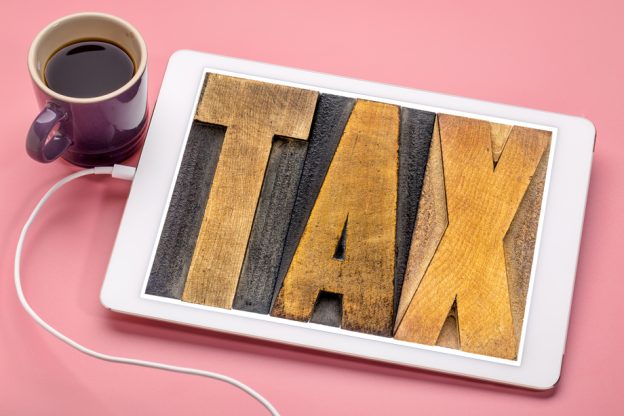
Just because you’ve retired, or your long-awaited retirement’s just around the corner, doesn’t mean you’ve escaped the taxman.
No, unfortunately, your pension is subject to tax in the same way your income has always been taxed—according to the amount you earn each year. Thankfully, though, that doesn’t mean you can’t still minimise the tax you pay on your pension.
Whether you’re solely reliant on a state pension and small savings account, or have a sizeable business pension and additional income streams under your belt, we’ve got you covered.
Read on for a straightforward, no nonsense approach to pension tax management, including four key tips on minimising the tax you pay and instructions for how to reclaim overpaid pension tax.
How pension tax works in the UK
Having reached retirement age or taken early retirement, it’s completely normal to be asking the questions: do you pay tax on pension earnings and, if so, how much can you earn tax free?
The bad news is that paying tax on your pension is basically unavoidable. The UK government’s tax authority, HMRC, treats pension income the same way it treats income from employment. In short, your pension is just another form of income in HMRC’s eyes.
As with regular Income Tax, your pension is taxed according to the amount you withdraw from it annually.
If that amount exceeds the standard Personal Allowance threshold of £12,570 (as of April 2025), then the exceeding portion will be taxed at 20% up to the Basic Rate ceiling of £50,270.
Annual pension earnings between £50,271 and £125,140 are taxed at the Higher Rate of 40%, whilst any pension earnings over £125,140 are taxed at the Additional Rate of 45%.
There are various caveats and special circumstances regarding pension tax, which we’ll explore later in the article, but in essence, this is how pension tax works in the UK in 2025.
State pension tax implications
Depending on the National Insurance contributions you’ve made throughout your working life, most people will find they are entitled to a full state pension.
The state pension—raised recently to £11,973 a year, or £230.25 a week)—comes in under the tax-free Personal Income Allowance of £12,570 described above.
This means that the full state pension can be enjoyed tax free, though this alone may not afford you the quality of life in retirement which you’ve become accustomed to in working life. Most people of retirement age hope to have additional pension income sources to rely on.
Business pension tax relief UK
Business pensions—better known as ‘Defined Contribution Pensions’—are a type of pension built up over the years by regular contributions made by both you and your employer(s).
Business pensions have different tax implications to state pensions, too: ones which can come in particularly handy when it comes to minimising the amount of pension tax you pay.
The key thing to note about defined contribution pensions is that they are usually subject to a 25% tax-free lump sum allowance (LSA).
The LSA allows you to withdraw up to 25% of your business pension pot tax-free, before the usual Income Tax rates (described above) apply.
Note: If you’ve multiple business pension pots, you can spread the 25% LSA across them through smaller withdrawals, each subject to the 25% tax free allowance up to a maximum value of £268,275.
However, to claim the 25% off your smaller lump sum withdrawals, you’ll have to file a P53 form with HMRC.
Another form of retirement earnings: Savings income
One of the savviest ways to avoid paying tax on your pension is to build your own pension pot with an ISA, since any income drawn from an ISA is legally tax-free.
Other, non-ISA savings and investments can also be used to supplement your retirement income, and these are subject to a tax-free Personal Savings Allowance (PSA) of:
- £1,000 a year (for basic-rate taxpayers)
- £500 a year (for higher-rate taxpayers)
- £0 a year (for additional-rate taxpayers)
How to avoid paying tax on your pension… to a degree
You’ll know by now that hopes of avoiding pension tax altogether are sadly just that: hopes and dreams. Unless you receive a state pension only, there’s no way to avoid paying tax on your pension altogether.
Still, there are some things you can do to minimise the tax you pay and maximise the value of your pension pots whilst you’re at it. Let’s take a look.
Pension tax tip 1) Withdraw only what you need from your pension pot
As savvy a general financial tip as it is a tax management tip, our first piece of advice to you is simply to avoid withdrawing more from your pension than you actually need.
Pension income which exceeds the £12,570 annual Personal Allowance will be taxed at 20%.
Provided you can keep your withdrawal amount below the higher rate threshold of £50,270, however, it’ll stay that way.
Exceed £50,270 in annual pension withdrawals, and you’ll suddenly be paying double the amount of tax on anything over that amount.
Pension tax tip 2) Vary your annual pension income to make the most of your allowances and tax rates
Since the introduction of greater pension freedom legislation in 2015, most modern defined contribution pensions offer something called a ‘drawdown’ scheme.
Drawdown schemes give you greater control over your pension income year-on-year, allowing you to vary the amount of your pension pot you withdraw.
Depending on your specific needs, wants, and expenses each tax year, you can make good use of a drawdown scheme by dipping back down below different tax thresholds as and when you’re able.
Pension tax tip 3) Never withdraw pensions all at once, unless absolutely necessary
It can be tempting to reach retirement age and decide to empty your pension pot all in one go: withdraw it to your current and/or savings account and manage it from there.
Doing so, however, will not only trigger an emergency tax code from HMRC (which could wildly overtax you in the first place), but will also likely push you well over the Higher-Rate, if not the Additional-Rate tax band at the same time, costing you much more pension tax than you should ever have to pay.
Pension tax tip 4) Use tax-free cash to top up pension incomes that would otherwise tip the tax bracket threshold
We’ve saved our best for last. Our top tip for reducing your pension tax bill is to make tactical use of the 25% tax-free lump sum allowance on your business pension pots.
Because you don’t have to use the LSA every time you make a pension withdrawal, you can instead opt to pay full tax on certain withdrawals and save your LSA for a later date instead.
Then, down the line, when you’re starting to approach a higher tax-rate threshold from regular pension withdrawals, you can call on your tax-free cash reserves to give you the income you need without pushing you over the line.
Reclaiming overpaid pension tax
Avoiding overpaying tax on your pension earnings is one thing, but what if you’ve been overcharged tax by HMRC? It’s more common than you might think, with roughly £1 billion in refunds made to pensioners by HMRC since pension accessibility rules were updated back in 2015.
If you think you may have been overcharged on your pension tax bill, don’t worry. You’ll get what you’re owed back at the end of the tax year.
Of course, if you can’t wait until then, you can instead apply directly to HMRC for a pension tax rebate.
Depending on the nature of the overcharge, you’ll need to fill in one of three online forms:
- If you emptied your pension in one tax year and were overcharged tax, and have not withdrawn any other income in that tax year, you should use HMRC form P50Z.
- If you emptied your pension pot in one tax year and do have other taxable income, use HMRC form P53Z
- Lastly, if you didn’t empty your pension pot in the first place, yet were still overcharged tax, you can use pension tax rebate form P55.
Conclusion
Getting the most out of your pension doesn’t need to be a challenge. Whilst all UK pensioners are obliged to pay pension tax on any pension earnings exceeding their personal tax-free allowance, there is plenty you can do to minimise the amount of pension tax you pay.
Start by withdrawing only what you need, and from there, be flexible with your pension earnings on a year-by-year basis.
If you’ve an LSA (lump sum allowance) attached to one of your business pension pots, you can use the 25% tax-free cash from this to top up withdrawals made elsewhere, too.
Together, these simple expert tips on avoiding overpaying tax on pension income will keep you below higher-rated tax bands and financially comfortable for many years to come.







